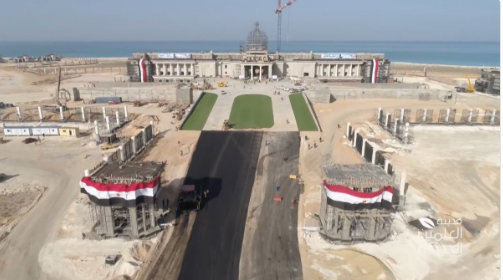Ethiopian state TV denied, on Wednesday, the statement of the Ethiopian Minister of Irrigation and Water Resources Seleshi Bekele that Ethiopia has started filling the Grand Ethiopian Renaissance Dam. This denial came hours after a report was broadcast attributing this statement to the minister. State TV apologised, claiming it was an unintended fault.
The Associated Press said yesterday that satellite images taken by the European Space Agency’s Sentinel-1 satellite, showed that the reservoir of the Grand Ethiopian Renaissance Dam was being filled. “But an analyst says it’s likely due to seasonal rains instead of government action,” the report added.
Egypt Watch communicated with a Sudanese official, who asked not to be named, who said that Ethiopia has started filling the dam, benefiting from the seasonal rains without announcing when they started filling it. Sudanese officials close to the Sudanese Prime Minister Abdalla Hamdok added that Sudan wouldn’t object to this unilateral step. Sudanese officials said that there are two types of gates to the Renaissance Dam. Some are used for the summer rainfalls, while others are secret and used for the autumn rainfalls. Such gates could be closed and used for filling the reservoir, while imagery would show that as a natural swelling because of the seasonal rainfall.
A press statement made by the Sudanese ministry of irrigation and water resources confirmed the information that Egypt Watch received, as the ministry said that its specialised bodies measured the water level in the Blue Nile, and they found clearly that the water level is diminishing by 90 milion m3 per day. “This confirms the closure of the Renaissance Dam’s gates,” said the ministry.
Although the Sudanese statement confirmed Sudan’s refusal of any unilateral steps, Sudanese sources told Egypt Watch that the dam could benefit Sudan through providing electricity and protection from floods. Sudan also expects an easy agreement with Ethiopia to protect Sudan from water shortages and other risks that could be caused by the dam. Cairo demanded Addis Ababa clarify the news that it was filling the dam, without clarifying what the Egyptian response to such steps would be.
Egypt, Sudan and Ethiopia have failed for years to sign a deal about the rules of running the Grand Ethiopian Dam despite repeated rounds of negotiations. Currently, the three countries are in direct negotiations for a deal, sponsored by the African Union, headed in the current round by the South African President Cyril Ramaphosa, but the negotiations haven’t yet progressed.





Recent Comments